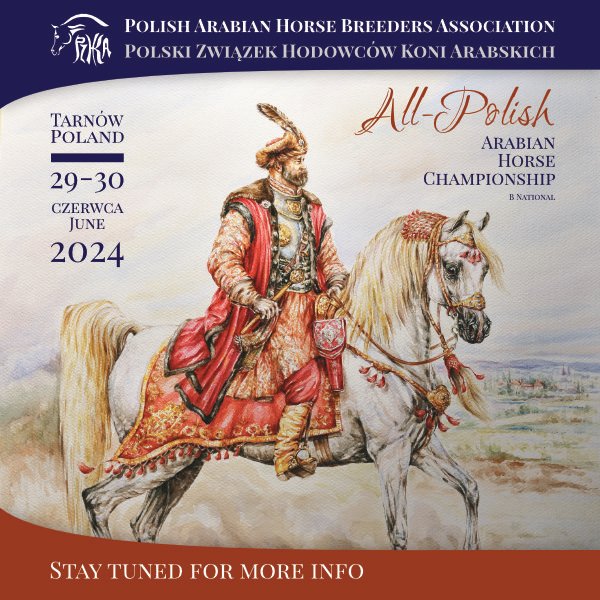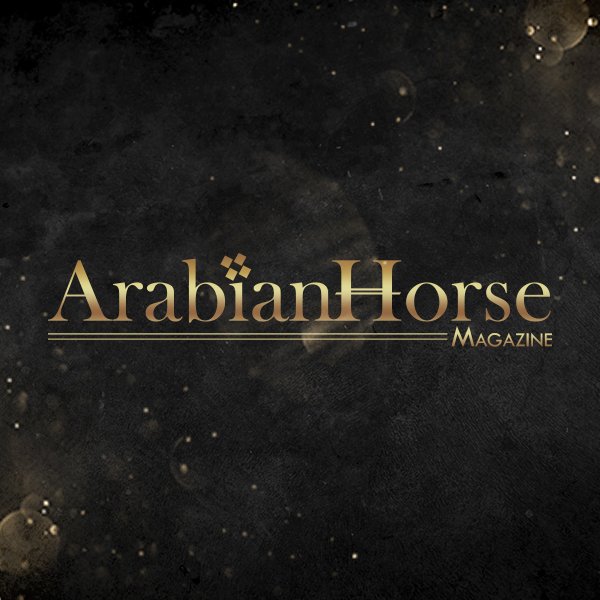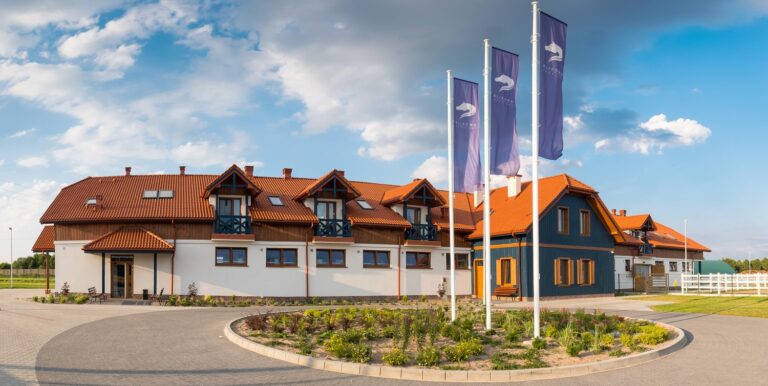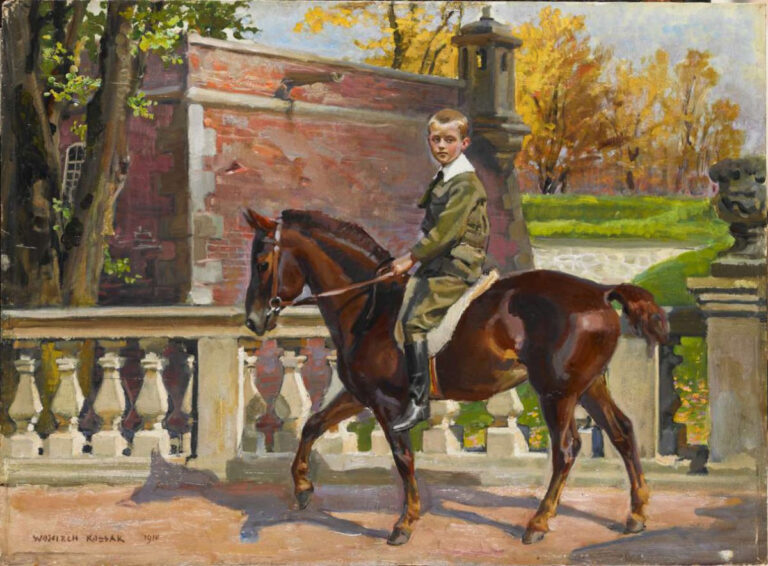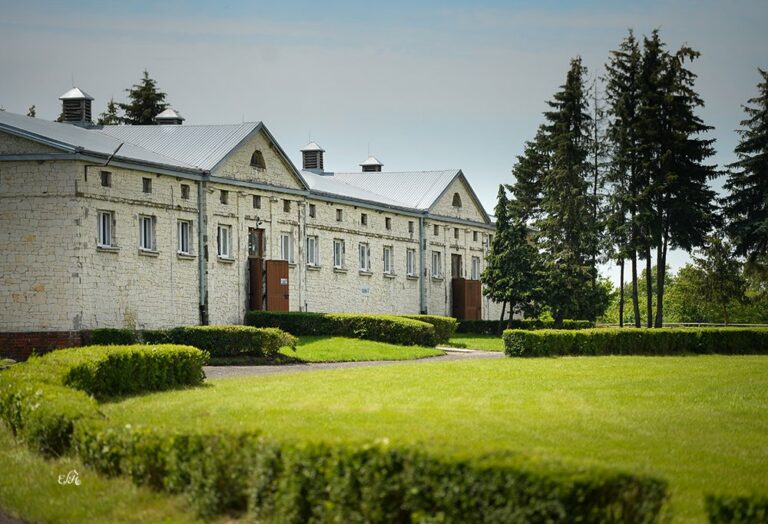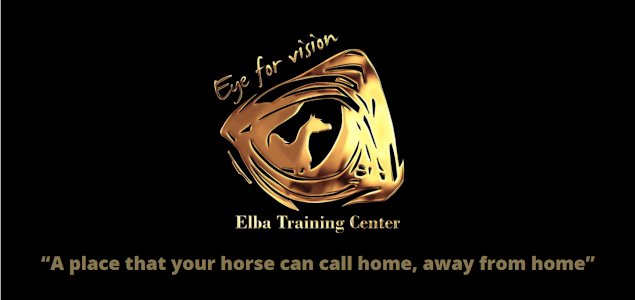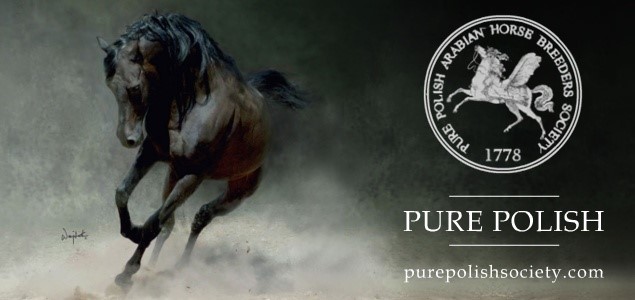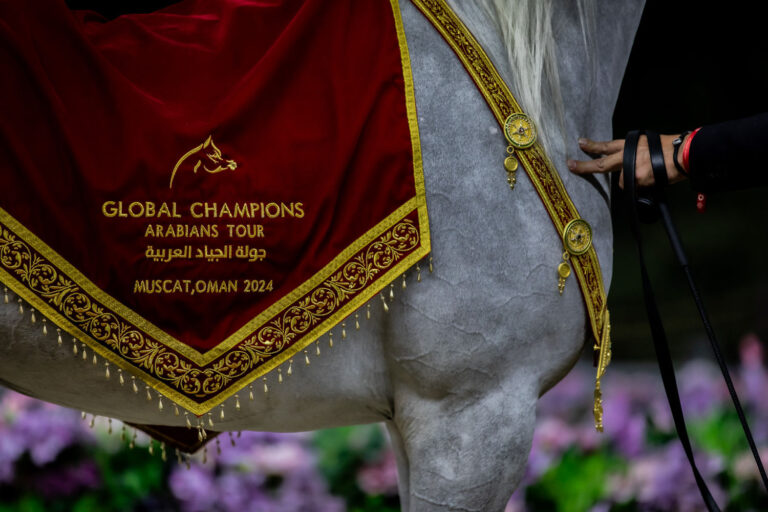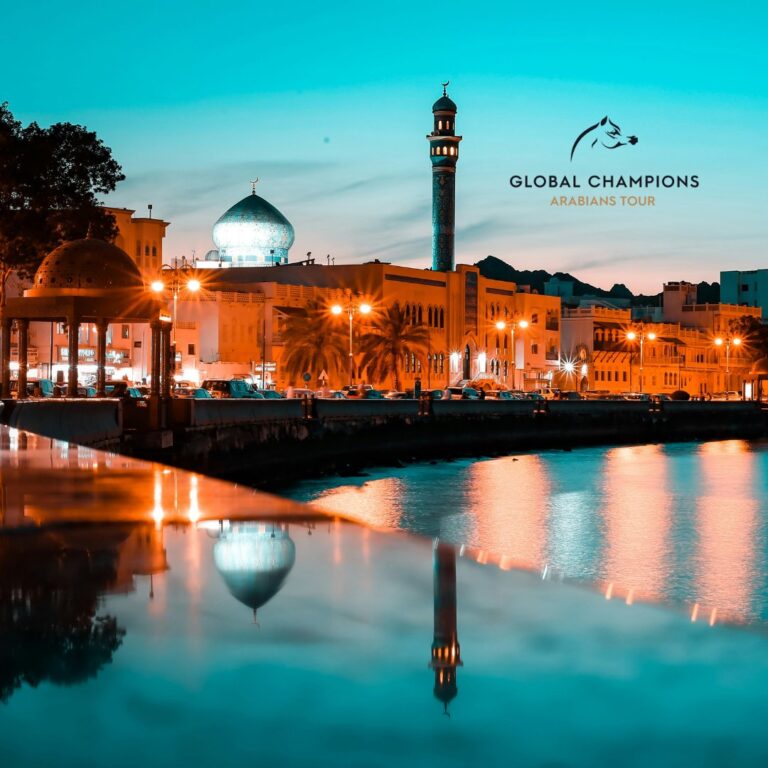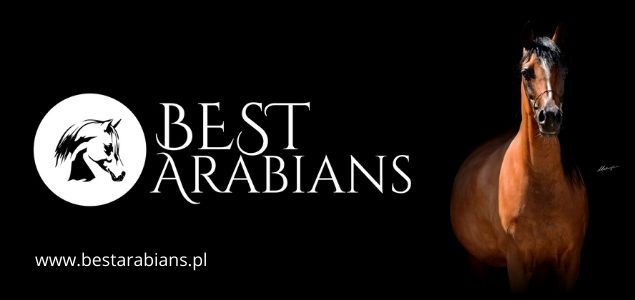
A decade of the stud farm is a good time to reflect on the history. HANNA SZTUKA from Agricola Farm, who is a senior breeder, an instructor of Polish Riding Sport Union, and now also a national judge, tells us a story about the experiences, difficult beginnings, but also successes and dreams.
Uneasy beginnings
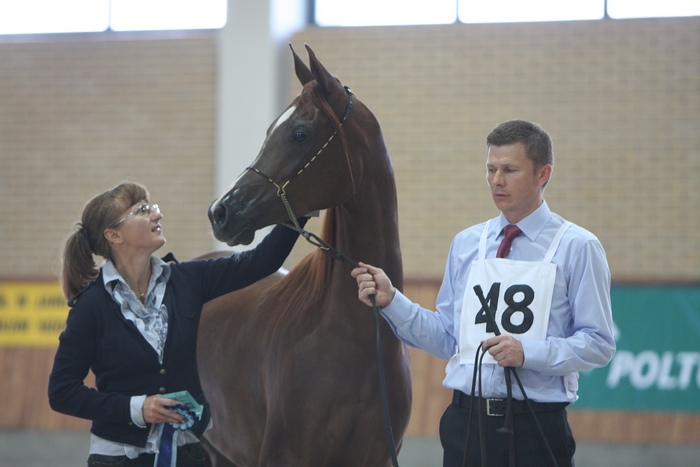
October 2008 was the 10th anniversary of my adventure with breeding Arabian horses. Finding myself among a sparse group of people, I had an impression that I was entering an elite of unique people for whom breeding horses of pure Arabian blood was a great passion. People I met by then captivated me with high politeness, knowledge, and full devotion for their work. Their respect for Polish breeding understood as one of the national goods was naturally transmitted on others, including myself.
I realize that our beginnings are somewhat different from those of my colleagues. The privatization of Kurozwęki Stud Farm wasn’t a fully understood occurrence. It was almost possible to feel material anxiety in the air regardless the stud. People in the business feared that a stud build for 25 years could be taken over by an amateur marring all the work implemented into its development. Only one aspect was secured by moving all the most valuable mares to different stud farms, withholding the herd from any kind of success. However, that is a different story. Regardless the initial disbelieve, the whole Tarus team was well accepted by the professionals. Our first steps were closely observed. Yet, I got the impression that someone was keeping fingers crossed for us to succeed and for our herd to breed successfully, even though we still did not have a clear final aim. However, we made it through the hardest times, especially due to the support we received from Agriculture Property

Agency (APA) workers and state studs directors. Breeding agreement signed with AWRSP while buying the Kurozwęki stud right from the beginning set some priorities. The agreement assumed maintaining 11 female lines. It was quite a challenge, considering that most of the mares were advanced age and there was great number of mares in the old Kuhailan type (great utility potential, but inconsistent with the leading national standard of beauty). The group of horses we bought counted 114 horses with pre-eminent number of young stallions, so right away we had to work out a development plan for the utility stud. Years between 1998 and 2001 were mostly devoted to work on the stud farm structure, adjustment of the farm in Olszówka for temporal housing of the herd, as well as intensive breeding activities aiming at raising high number of young mares.
The structure of the stud farm
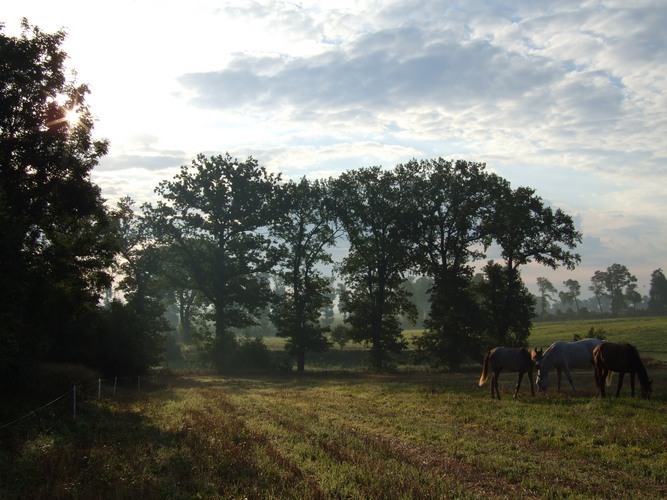
The first years of stud farm structuring were devoted to providing the horses with convenient breeding environment. Assuming that the heart of successfully maintained herd is in well balanced feed and unlimited access to suitable pastures, we spent a lot of time on developing adequate state. Especially that we were not sure whether the climate and environmental conditions of Warmia would be favourable for Arabians. Yet, after ten years I can surely state that the herd is healthy growing in the new place. The change of environment was most visible on the Kurozwęki’s grandmares, whose fertility and health amuse us till today.

Meanwhile, the stud was joined by mares bought from Janów (Etura and Sieć), Michałów (Ebola, Garsoniera, Wizjerka, Cygarniczka, Flecistka), and horse imported from the United States of America – MB Maarasa, Addham, as well as Missia, Vahta and Arzgir from Tiersk. The import of Arzgir (Gordon – Arabica/Balaton) was our first fully though through decision, for the purpose of recreation in Poland the Koheilan Adjuze family which turned out to be inspiring and useful for our husbandry. Simultaneously, the stud was joined by Nagroda and Wizyta, as a result of another transaction.
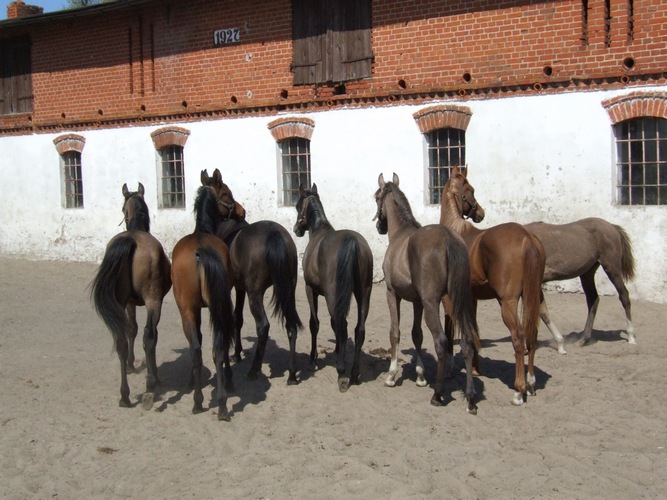
Years 1998 – 1999 were especially burdensome. The zoo-technical state of the introduced herd required us to make a lot of difficult and risky decisions. Some of the horses had to be treated in the Warsaw University of Life Sciences (WULS) clinic, as it turned out that over 40% of the new mares who were bough as fertile turned out to be barren. At that time, the assistance from professors Zdzisław Kłos (surgeon) and Zdzisław Boryczko (gynaecologist) from WULS was invaluable. The decision about moving the herd from Kurozwęki to Olszówka was like jumping of a high edge, but it was the only solution. The removal proved healing for the herd. Thanks to the change of environment, new conditions, vaccinations, and new management of the stud, the fertility of mares was very high. Year 2001 was a breakthrough – out of 28 foals that were born 21 were fillies and 10 from them joined the stud in 2005. From 2003 it was possible for us to choose the best mares who, slowly withdrawing the older Kurozwęki’s mares (who found their new home in private stud farms around Poland).
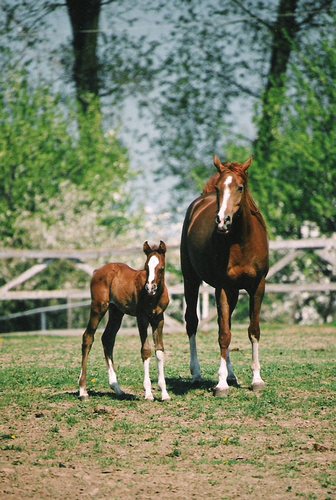
Year 2001 was marked by passing of the Tarus Arabians founder and patron, Tadeusz Rusiecki. His leave put into question the future of the stud farm. The ancients used to say “Per aspera ad astra”. Today, in 2009, we have completely accomplished the breeding commitments from 1998. There are 11 female lines enriched by imported Bint El Bahrein dam line and Koheilan Adjuze sire line. The herd is healthy growing maintained with the highest standards. Also, we have several successes which make us very proud. In commemoration of Tarus, our horses wear characteristic letter “T”.
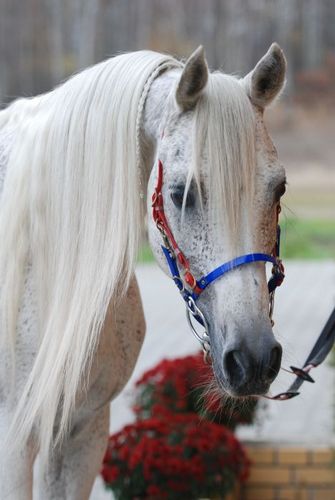
Since several years we are slowly reducing the number of horses, from 168 in 2002 to 80 right now (including 7 Malopolski horses). Most of the horses we sell are geldings and mares not classified for breeding. Many horses raised in Olszówka grow successful sport carriers in endurance (Czyn, Grant, Cyryl, Sławoj, Waligóra, and Elpas), dressage (Wabank), and jumping (Eroika). We try not to part with our mares, at least until we raise their daughters. Our experience shows that many horses need years to properly grow up and give birth to valuable offspring. Rash decisions about selling the foals and young stock are very risky. However, keeping and raising all of them is very expensive and exhausting. Against the general reputation, not all the Arabs are invaluable, phenomenal, or epoch-making. The bigger is the husbandry, the more rare horses there are, especially stallions. Dealing with breeding, one needs to remember that breeding each mare is always accompanied by great expectations, but also by the responsibility for the future of the foal.
Broodmares
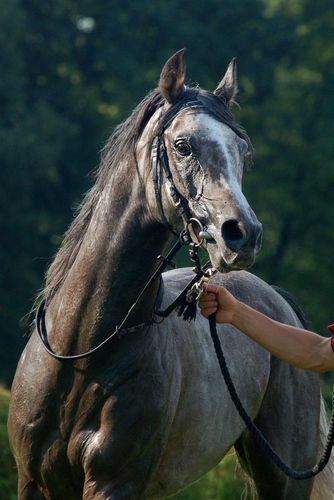
The priority of each stud farm is the constant improvement of horses breeding qualities. The road our herd has gone through for the past 10 years was possible to experience only in those times. Currently, the demands of the market are so high that starting breeding with mid-quality mares would be very risky. It is hard to believe in the idea of pure breeding in times of embryotransfers and massive quantities of fashionable stallions. The times of great breeders with a vision has gone away with the nesters of Polish husbandries. Today, the breeding trends are set by the market and specific tastes of clients “fiddling” with shows. While observing the market, we come to a conclusion that setting our own goals is more difficult than it was 10 years ago. Part of our mares come from the Kurozwęki dam lines, representing high utility characteristics along with solid basics. It would be hard to expect of them the same beauty and look of the show horses. However, due to breeding them with stallions form Michałów and Russian lines, we managed to raise horses that are successful, win races and shows (for example Eliat by Eldon and Elpas by Arzgir). Currently, the racing lines of our husbandry are represented by mares: Elrosa (Perlik – Efedryna/Borek) – a descendant of Ellora from Janów Podlaski (the same line as Eliat and Elpas); Garsoniera (Wojsław – Gaskonia/Probat) out of Gastronomia line, as well as Mammona line mares: Malowana Lala (Empres – Missia/Balaton), Magdalenka (Werter – Missia/Balaton) and Valeriana (Werter – Vahta/Aspekt).
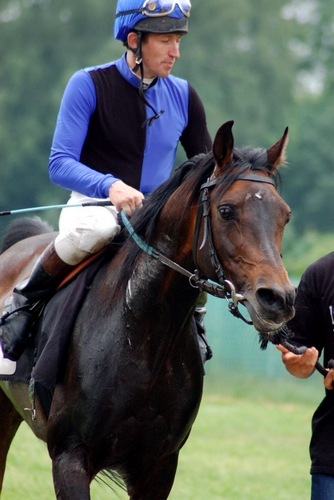
The rest of the mares can be divided into two groups. The first group includes mixed type mares where utility characteristics do not exclude their beauty. The second group includes modern show type mares of exclusive beauty and grace. The first group is represented by Wizyta (Wermut – Wiorsta/Banat), Nagroda (Partner – Nejtyczanka/Banat), Epika (Endel – Eksplozja/Banat), Etulina (Arzgir – Etura/Etogram) and two daughters of stallion Pesal – Bagatela (out of Braminka/Elef) and Wiola da Gamba (out of Wizyta/Wermut). The second group is pure Egyptian blood imported from the United States: MB Maarasa (El Halimaar – Tammany/Tammen) and her daughter Marionetka (by Wołyń), Sasha (Wołyń – Safiya/Empres), Zaria (Furiat – Zaliczka/Borek), Zulejda (Empres – Zaliczka/Borek), Elody (Empres – Ebola/Eldon) and Hebe (Kubinec – Hossa/Pepton).
Stallions
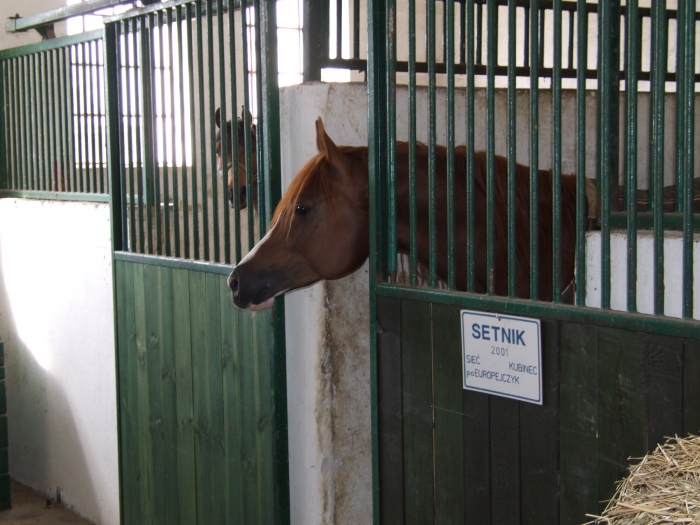
The kind of division valid for the mares has very liquid boundaries. It presents how a modern type stallion can be used on a greater scale. For example, stallion Złocień (Michałów-bred) is a wonderful example of a horse who inherited great utility traits from his mare’s sire Piechur, and traits representing latest show trends from his sire Laheeb. Having him in our stable in 2006, we decided to match him with all suitable mares. The effect is surprising, as Złocień became the sire of 19 wonderful foals. We already believe that those horses will significantly change the image of our stud farm during the next decade. Fundamental for achieving such success were the mares used in the breeding process, daughters of stallions used in 1999 – 2000 seasons, such as Empres (Monogramm – Empressa/Probat), Pesal from Białka (Partner – Perforacja/Ernal) and Kubinec (Balaton – Kosmetika/Muscat). On the other hand, we had daughters of the stallion Werter (Eukaliptus – Walkiria/Mamluk), used in Agricola Farm in 2003, who represent slightly different type. We
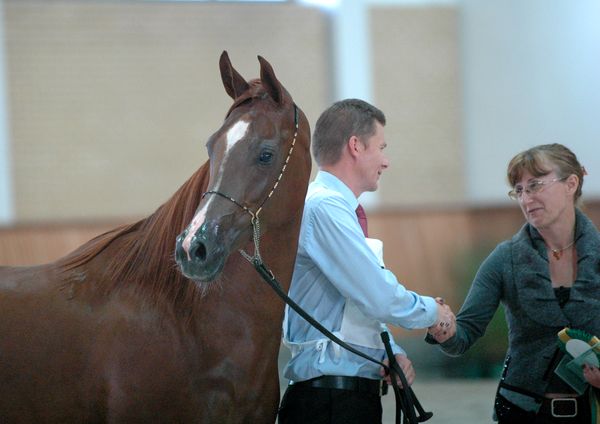
have chosen him as a result of a long search of a successful Kurozwęki stallion. Even though Werter was not perfect, he passed on exquisite traits which were desired for our mares, such as modern type, nicely set and long neck, smart head with beautiful dark eyes, and the general grace in the air while he moves, merged with gentile character. As a result, we can present Carioca (Werter – Cruella/Ararat) and Lotta (Werter – La Bamba/Emigrant) out of the Kurozwęki mares, and out of imported mares Magdalenka (Werter – Missia/Balaton) and Valeriana (Werter – Vachta/Aspekt). All of them will replace their dams, starting their breeding career in 2009. For us it is a great challenge, as we will have to pair them up with appropriate partners.
Our goals
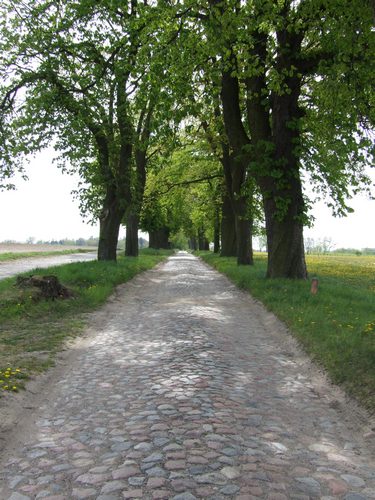
Some time ago we were visited by friends working in the same business who noticed that we have chosen a different way to approach the same goal as other breeders. Passing on fashion, we concentrate on finding steadfast stallions (most wanted are sons of Michałów-bred mares), who have characteristics most desired by us: type, long beautiful neck, good head, good movements and general elegance. This way, pairing our mares with stallions like Empres, Pesal, Werter or Złocień, we move forward step by step, also taking examples from other stud farms around Poland. Best occasion to see what others have to offer are breeding inspections in state stud farms. Watching accomplishments of great breeders gives the possibility to appraise our own achievements from the appropriate perspective, and sometimes to adjust the goals already set. What are the goals for us? Above all, it is the joy and pride from visible growth effects of our wonderful herd. It is the satisfaction we feel when our horses win races, endurance competitions, dressage competitions, and shows. It is a constant process of improving the quality of our horses. Finally, it is the evening or morning in the stable, when a new hope is born. Those are our biggest goals!
1998-2008 Diary

1973 – 1998 – Stud Farm in Kurozwęki
1998 – Purchase of Kurozwęki stud by Tarus Arabians
1999 – Moving of the herd to Olszówka
First appearance of our horses at shows (Białka: II place Elistan; Janów Podlaski, Aachen, Werona: Wizyta IV place)
Founded by Tarus Arabians Europe Awards – Tarus Cup – 50 000 USD.
Junior Stallion Championship of Private Owners for stallion Elistan.
2000 – Supplementation of the herd though imports and purchases in Poland.
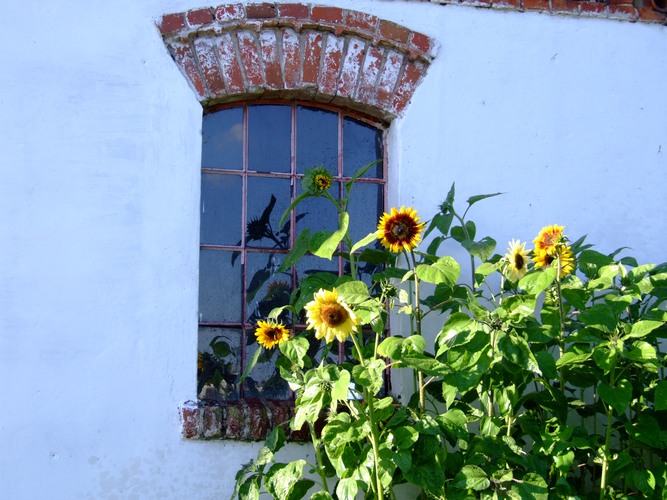
Victory of our horses in competitions ‘in saddle’ in Białka (Zagraj: I place, Belcanto: II place)
2001 – Agricola becomes the new owner of the stud farm
2002 – Change of the name into Agricola Farm
2006 – Double victory in Derby: Eliat (I place) Elpas (III place)
2006 – PZHKA Award for the best breeder in category “Endurance”
2008 – Senior Mares Championship for the mare Valeriana at III Autumn Show in Janów Podlaski.


